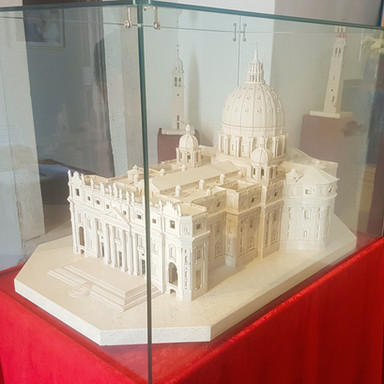Find the history
The old Illyrians used to live here. They were humble people. On the Brač plateau, they raised livestock, mainly sheep and goats. They dug watering holes for livestock in the compact stone and built stone mounds that you can still find today when exploring the beautiful nature of the interior of the island. Stone mounds were their houses, their temples and their graves.







The peace of the Illyrians was disturbed by the Romans who, after bloody wars in the second century, finally took control of this area. As a reward, their soldiers would receive fertile lands by the sea where they built their villas and sanctuaries. The remains of Roman buildings were found near the present-day Pučišća cemetery. In the following centuries, pagan sanctuaries were converted into Christian ones. On the same place arose the early Christian basilica of St. Stephen's, and later the Benedictine and Augustinian monasteries. Along the foundations of the church of St. Stephen, you can still see the stone baptistery from the 6th century. Old Pučišća emerged around the church and monastery, and another settlement emerged in a similar way around the former church of St. Hyginus in the western part of Pučišća bay. Those places by the sea soon came under attack by various pirates, so their inhabitants retreated to the interior of the island.

In the 9th century, a new warrior people from the east, the Croats, came to Brač. Mixing with the Illyrians and Romans, near Gornji Humac and Pražnica, they built their first settlements on the island: Gradac, Dubravice, Mošuja and Straževnik. These settlements don't exist today. First they were ravaged by the great plague in the 15th century and after the threat of sea pirates ceased, the few remaining inhabitants returned to the coast. Now you can find only traces of their houses and preserved medieval churches with burial grounds.


Then, at the end of the 14th century, Pučišća came to life again. However, the peace did not last long because a new danger from the east was already at the door. The Ottoman Empire was expanding, and their ships sailed into Pučišća bay. This time the residents of Pučišća decided not to run away. Instead, they built defensive towers. A total of thirteen towers on the sea cliffs were built from 1467 to the second half of the 16th century. Pučišća thus became a small fortress and got the name Luka Kula (Harbour of Towers). You can still find six of them today, and the rest have been walled off or demolished by the ravages of time.

There are still numerous records of the successful defense of the place against Turkish and Uskok raids. The most famous battle is from 1571, when around 1,000 Turkish soldiers with twenty ships attacked the place, which was then burned and looted, but still defended thanks to well- fortified towers and the intercession of the Blessed Virgin Mary. The people of Pučišća have always honored Her in a special way, so in 1482 they built a beautiful church for Her on Botak, which soon became their first parish church. They received permission from the pastor of the parent parish of Pražnica to build it, but under the condition that it be no wider than three stones. The wise citizens of Pučišća, led by Ciprijan Žuvetić, looked for the three longest stones they could find, which you can still recognize today on the front of the church. Inside the church you will also find a beautiful winged altarpiece by master Nikola Radojković. In its center, the Mother of God is surrounded by four saints: St. Anthony the Abbot in honor of the patron of the home parish in Pražnica, St. Stephen in honor of the patron of Old Pučišća, St. Cyprian, namesake of Žuvetić, and St. Nicholas, patron of Gornji Humac and namesake of stonemasons Radojković. If you look a little closer, on Our Lady's neck, you will recognize the place where the head of the Mother of God was torn off in one of the raids in the 16th century. Tradition says the raiders tried to steal it, but the wind did not allow them to leave the bay by boat until they returned the head of the Mother of God to shore. Terrified locals found the head glowing in a bush by the sea near today's Sveti Rok beach and returned it to the church. The church also has stone graves with carved coats of arms of the founders of Pučišća from the noble families Žuvetić, Aquila, Radojković and Bokanić, so it can be said that it is the necropolis of the founders of Pučišća. Today, you can see a unique stone miniature of the Vatican's Basilica of St. Peter, the work of the Pučišća master Josip Radić.



Immediately after the foundation of the parish in 1566, construction of the new parish church of St. Jerome began. Its bell tower, completed in 1768, is one of the most striking motifs. In the area of Pučišća, Pražnica and Gornji Humac, you will find as many as 22 larger or smaller churches and dozens of chapels that the hardworking people of Brač built over the centuries as a permanent symbol of faith, hope and gratitude. Marked footpaths lead to them. Whichever path you take, you'll feel as if you're disappearing into a story where the past, present and future are intertwined. Seduced by the scents of the Mediterranean, the old field roads will lead you through well-kept vineyards and olive groves, and the blows of the wide hoes hitting the rocky soil will sound like the song of an old farmer working for a drop of oil, a drop of wine.
That is our history. Find it.






CONTACT
Official Pučišća Tourist Board
Trg Hrvatskog skupa 1
21412 Pučišća
OIB: 18998435853
Tel: +385 21 633 555
E-mail: tz@pucisca.hr
© 2023 by Official Pučišća Tourist Board


